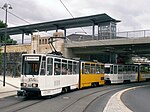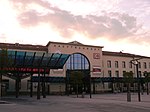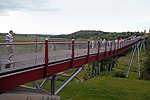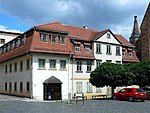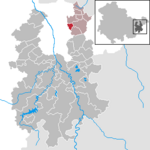Botanischer Garten Gera
Botanical gardens in GermanyGardens in ThuringiaGeraGerman garden stubsThuringia geography stubs

The Botanischer Garten Gera (0.7 hectares), also known as the Botanischer Garten der Museum für Naturkunde Gera, is a botanical garden located on the grounds of the Museum für Naturkunde der Stadt Gera at Nicolaistrasse 6, Gera, Thuringia, Germany. It is open daily without charge. The garden was created from 1897 to 1900 in the English garden style, and is the last surviving garden in front of the eastern wall. It was linked to the municipal Museum of Natural History in 1947. Today it contains about 300 plant species, including trees, culinary herbs, and medical plants, as well as a tower house built in 1864.
Excerpt from the Wikipedia article Botanischer Garten Gera (License: CC BY-SA 3.0, Authors, Images).Botanischer Garten Gera
Nicolaistraße,
Geographical coordinates (GPS) Address Phone number Website External links Nearby Places Show on map
Geographical coordinates (GPS)
| Latitude | Longitude |
|---|---|
| N 50.8758 ° | E 12.0878 ° |
Address
Botanischer Garten Gera
Nicolaistraße 24
07545 , Ostviertel
Thuringia, Germany
Open on Google Maps

